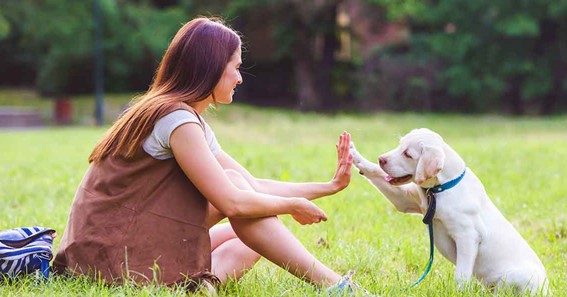At What Age Can I Begin Training My New Domestic Dog?
Your new puppy is learning throughout each waking second! Every interplay you’ve got together with your pup from the time you first meet is going to be a shape of education. Housetraining, family manners, and social stories are all varieties of schooling you may be doing together with your doggy the first time you return home. In some situations, dogs may even start a few formal schooling before they visit their new home, inclusive of housetraining, greetings, and how their actions can result in rewards.
Click here https://singerbio.com/
How Do Puppies Study?
Puppies, like every animal, examine by doing what works for them. Puppies will repeat behaviors that have an excellent outcome. If it leads to a treat, attention, a toy, a desired interaction, or the capacity to discover, sniff, or run, the domestic dog will do it again inside the destiny. In standard, first-class exercise is to teach puppies what to do through reward and rewards (positive reinforcement). Using control, supervision, and tremendous reinforcement training plans to set dogs up for achievement is effective and safe. Waiting until the domestic dog does something you don’t need and then seeking to punish the behavior can result in problems including avoidance, fear, and confusion.
First, analyze what your pup likes, then make certain she finds something she likes every time she likes you! It’s an easy concept however it can be hard to implement. Remember, the praise or reinforcement ought to continually be from the puppy’s factor of view.
Example: What if my domestic dog likes interest and affection? My domestic dog jumps on me and I lean over to place my hand on him and push him off with my legs while saying “off”. He jumps again, and we repeat the system.
Think approximately it from the doggy’s point of view: I forget about the puppy > the pup jumps up > and I touch the pup and talk to it. Guess what, it worked! Puppies do not act to harass or compete with us.
What Must I Educate My Puppy?
As well known, the nice method is to keep in mind what you want your domestic dog to do; What is the desired direction of action in a scenario or response to a signal? Some examples encompass:
- When the doggy sees someone
- When the puppy hears its call
- When the pup sees any other animal
- When Puppy hears the doorbell
- How to get its leash and/or equipment
Once you’ve got a clear picture of the ways you need your puppy to act, you can start coaching him to take small steps toward that purpose. For example, whilst your pup hears his call, you want him to return to the person who is known as him and wait near that individual. This reaction can be trained using a mixture of lure, snatch and form. We will observe this example.
What Are Lure And The Way I Use It?
Lure schooling is the use of a deal with or something the puppy will predictably display the pup what to do. The lure is useful the first time new behaviors are brought. The greed commonly goes away speedily once the pup starts offevolved to expose know-how.
The entice must be like a magnet, to which the pup’s nostril is attracted and attached. Moving the entice gets the domestic dog’s nose in the suitable function, and where the nose is going, the body will comply with it. Behavior is the easiest lure. Use small treats with the dimensions of a pencil eraser that are excessive in price.
Example: My domestic dog is sniffing the floor close by. I call his name and at once a delicious dish right beneath his nose. When his nostril is magnetized to the treat, I draw a gradual regular line with the treat in the direction of my frame, and take some steps back, allowing the doggy to take small licks or bites on the treat.
For a puppy to take a seat, the lure must be slowly lifted and returned. When a doggy’s nostril is going up and lower back, its tail usually sags.
For a domestic dog to stroll on their bed or in the kennel, the lure has to be at a nose degree where the pup can effortlessly observe it, and they need to be licked or bitten every few steps until they attain the goal spot in which some other treatment is given is going.
